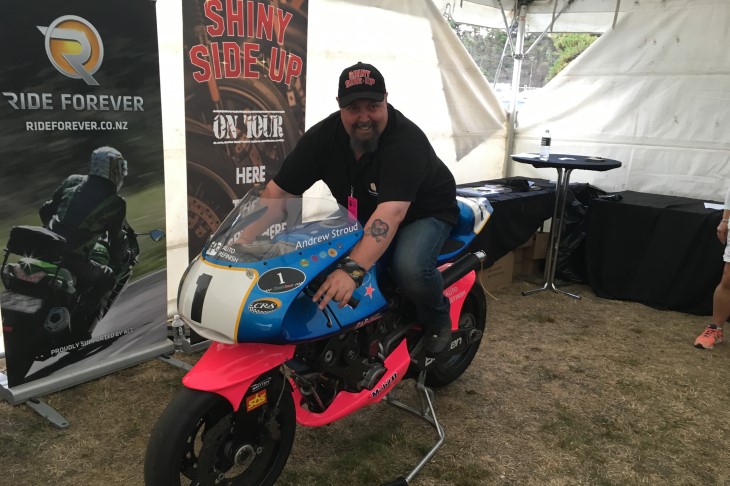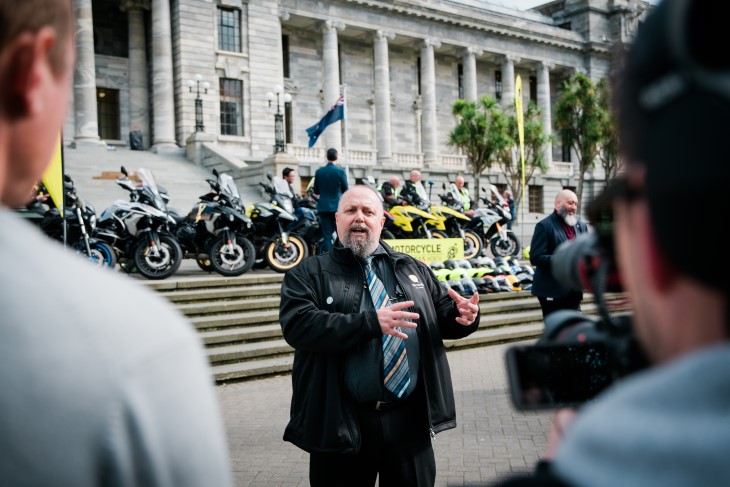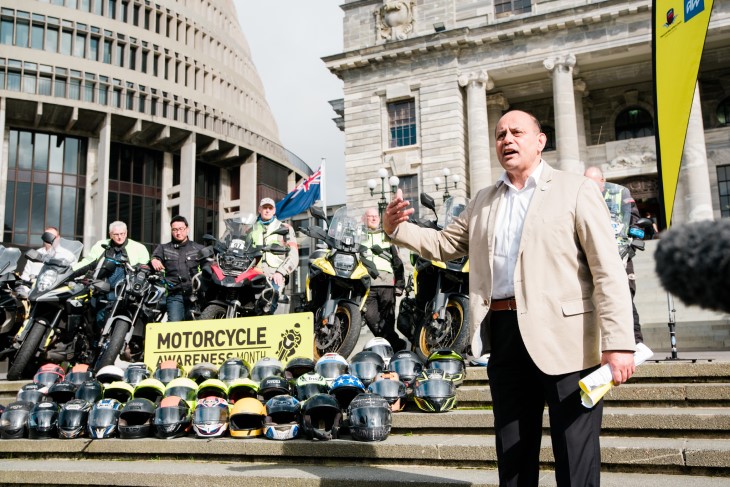Dave’s story: Why motorbike safety means so much to me

Dave Keilty is an Injury Prevention Leader for ACC and manages our Ride Forever programme. He has a personal motivation to improve motorcycle safety after losing loved ones on the road.
Motorbikes are in my blood.
I don’t think I’ll ever be without one, it feels very strange when I don’t have a bike.
A couple of times when I haven’t had one, my partner has said, ‘It’s about time you got back on the bike because you’re miserable’. So she knows it’s just part of being me.
I started riding bikes when I was about 14 back home in the UK. The bikes were never really up to standard, they were always broken.
We’d get a couple of mates together, repair them and thrash them around the hills. It was very different to what it’s like now – we didn’t really have any idea of safety.
You learnt by experience – which basically means you fall off, you realise it hurts and then you go and buy something to stop it from hurting next time. It sounds crazy now but that’s how you improved your gear.
Once I left school, a motorbike was my only option for transport really because it was the cheapest form at the time. You had to get a bike because you couldn’t afford a car, not back in those days.

The little two-strokes were the go at the time and a whole lot of us used to boom around the streets pretending we were racers, tuning them and trying to get them as fast as we could – it was awesome!
But there wasn’t a lot around to guide you and keep you safe. If I wanted access to any information back then, all I could do was ask a mate, who might potentially know from his experience. But if he had rubbish experience then I would now be learning from his rubbish experience.
We also didn’t have all the gear you have now – it was just leather and jeans basically.
But there’s so much good stuff available now and ways for you to get the information you need to keep yourself safe. The access to the information is so easy now with online.
Inspired by the trauma of loved ones
Doing all I can to keep riders safe means so much to me.
I have mates who have been killed and my best friend who I learned to ride with is now in a wheelchair from a motorbike accident. I never want another one of my friends, family or anyone else to have to go through something like that.
And it’s so satisfying to see the difference the work we’re doing is actually making. Our data tells us riders who have been through a Ride Forever course are up to 50 per cent less likely to make an ACC claim from an accident than those who haven’t done the courses.
That shows me we’re doing the right thing and it’s working. And the more riders we can get on these courses then the less people will have to say goodbye to a close friend or family member, or see them suffer a serious injury.
My advice to all motorbike riders would be to make sure your bike is in good condition, make sure you’ve got the best gear you can afford and then get on one of the Ride Forever courses.

Dave with his childhood friend Jason Smith, who is now in a wheelchair from a motorbike accident.
Why you should choose to Ride Forever
They’re such good courses to help build confidence at first and then increase your skill levels as you move through the programme. It’s a tiered approach – Bronze, Silver and Gold – so you can start at the bottom and work your way through to be a high-level, experienced rider taking Gold courses.
The Bronze and Silver are also really good for a refresh or if you’ve been out of riding for a while. You can jump back in, test the skills you’ve got and get some guidance from a really experienced training provider.
The Gold courses are slightly different, they’re more of a menu-based approach because we’re not saying these guys can’t ride. But there may be specific areas you want to enhance.
So if you’ve got a few people on a Gold course, each person can ask for something specific to them they’d like to see improved. So someone might say they’d like to improve on their braking or be better at cornering.
It’s really interesting because we have people that have been riding for over 40 years who then get on a course and say how much of an eye-opener it is. Bikes have changed through the years with technology but the rider hasn’t. So what we need to do is raise your skills, knowledge and competencies up as high as your bike.
The bike has far more to give than you’re probably ever willing to risk – if you have confidence in what the bike can do, it will do it. So quite often the error comes from the person’s input and not the bike itself.
How we’re hurting ourselves on the road
Everyone likes to point the finger of blame and this seems like a really big deal. But people forget that ACC is a no-fault scheme so we don’t care whose fault an accident is, it’s irrelevant.
We just care that there’s been an injury and we’re going to do the best we can to fix that for you or, ideally, prevent you from getting injured in the first place.
But in an urban setting, statistically we’re looking at fault being divided up roughly into thirds. So you’ve got a third which will be the car driver’s fault, another third is the motorcyclist and the other third is a bit of both.
The worst injuries to a motorcyclist are at intersections. We call them ‘Smidsy’ crashes and they’re one of the only crashes that have a name.
They’re named after what people say to you while they’re picking you up off the ground. They get out of their car and the first thing they say is, ‘Sorry mate, I didn’t see you’. It happens so often that all motorcyclists around the world know that phrase.
Out in the rural parts of the country though, it’s far more likely to be a single vehicle accident and that means it’s motorcyclists who are at fault. The biggest reason is that we get it wrong at corners. Our entry speed is wrong, our gear, our braking, our positioning – there’s a whole lot of reasons why it can all go wrong.
We just don’t get it right often enough at corners and the other one that’s a big problem for us is overtaking – the number of head-on crashes is quite amazing.

Dave talks at the launch of Motorcycle Awareness Month at Parliament
The joy of riding
One of the great things about Ride Forever is that you’ll get on-road training in all these key areas. We know riders just want to ride and that many of us learn by doing. So we put the majority of the riding on the road, instead of in a car park wobbling around some cones, which is low speed and not really true to life.
There’s a small theory component but 70 per cent of each course is actually out on the road. So when you go away, you’re going to have a huge amount of information that really is going to keep you safe.
I would never tell anyone not to ride a motorbike – riding just gives you so much freedom and joy. All the stresses of life just wash away when you’re on a bike – it’s magical.
But we want you to stay safe to enjoy that feeling and get home to your whānau after every ride.
The Ride Forever courses are available all over the country and there’s no reason not to get on one. So be sure to find your nearest course on our website and sign up – it might just save your life.




